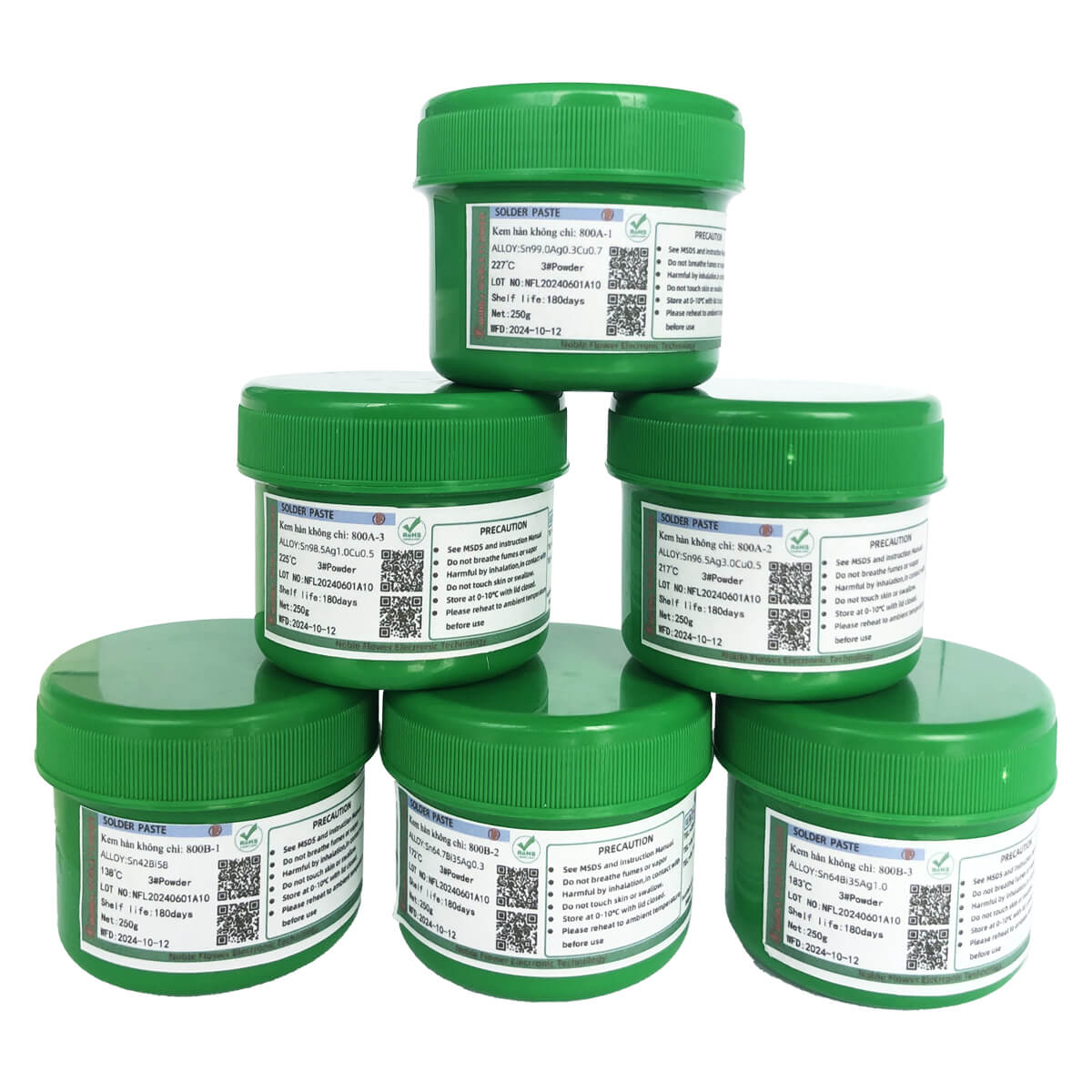Views: 1 创始人: Site Editor Publish Time: 2024-11-21 Origin: Site








"Bismuth" is a chemically stable
metal element, its element symbol is Bi, the atomic number is 83, and the
element is silvery-white to pink metal. Bismuth-containing solder paste is also
called tin bismuth solder paste, and the more common model is Sn42Bi58, with an
alloy ratio of 42% tin (Sn) and 58% bismuth (Bi).
The following is explained by Suzhou Nofer
solder paste manufacturers to explain the advantages of adding
"bismuth" to solder paste
1. Reduce the melting point of solder
paste. The melting point of tin itself is high, but after adding bismuth to
form an alloy, it can effectively reduce the melting point of solder paste; This
solder paste has a melting point of only 138°C, which is often referred to as
low-temperature solder paste, and is used when the components of the chip
cannot withstand the high temperature above 200°C and the chip reflow soldering
process is required.
2. Increase the hardness of solder paste.
Pure bismuth is very soft, but in the case of impurity with other elements,
bismuth is brittle with a certain hardness, and is relatively stable at room
temperature, which can increase the hardness of solder paste. 1. RoHS
compliant;
The melting point of this solder paste is
only 138°C, which is what we often call low-temperature
solder paste. This solder paste is used when the chip component cannot
withstand high temperatures above 200°C and the chip
reflow process is required. 2. Good wettability, bright and uniform solder
joints;
3. Tin bismuth silver solder paste is an
improvement on the basis of tin bismuth solder paste. The addition of silver
improves the conductivity of the solder paste. Silver is a metallic element
with excellent electrical conductivity, and its addition makes up for the
general conductivity of simple tin-bismuth solder paste.
4. In tin-bismuth silver solder paste,
silver forms a new alloy system with tin and bismuth. This alloy system
maintains the original advantages of tin-bismuth solder paste, such as a low
melting point (still close to about 139°C, suitable for
the reflow soldering process of temperature-sensitive chip components), good
wettability (the solder joint can still remain bright and uniform and full),
and RoHS compliant.
5. Excellent printability, and it is not
easy to miss depressions and agglomeration during the printing process;
6. Long paste life, long stencil printing
life

Properties of low-temperature solder paste:
1. RoHS compliant; ;
2. Low melting point, only 139°C; Although the addition of "bismuth" elements to the
Low Temperature Solder Paste can bring many advantages, but there will also be disadvantages,
the bismuth content is too high, which will cause the solder paste to become
brittle, and the conductivity of the "bismuth" element itself is only
good, not excellent, resulting in the general conductivity of the solder paste.
3. Good wettability, bright and uniform
solder joints;
In addition, tin bismuth silver solder
paste also inherits the excellent characteristics of tin bismuth solder paste
in terms of printability, which is not easy to miss depressions and
agglomeration during the printing process, and its stencil printing life is
long, and has a long-term paste life. The successful development of this new
solder paste provides more options for the electronics manufacturing industry,
especially in the assembly of electronic devices with high conductivity
requirements, which can better meet the production needs, while taking into
account other process requirements, such as the soldering needs of
temperature-sensitive components and the printing process requirements.
 苏公网安备32058302004438
苏公网安备32058302004438